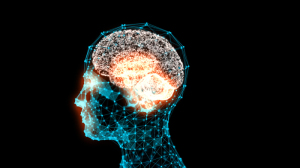From the June 2017 issue of HealthCare Business News magazine
By Robert S. Miletich
Much of the historical development of medical imaging after the time of Wilhelm Roentgen was fueled by a quest for an image of the brain.
Even with the use of X-rays, the brain in the intracranial vault remained a secret place, as it was not readily examinable by clinical practitioners because of its encasement in the bony box called the skull. The development of computed assisted tomography, now called CT, revolutionized the practice of clinical neurology in the 1970s. CT was soon overtaken by nuclear magnetic resonance imaging, now called MRI, in major part because of the better soft tissue contrast that MRI affords. CT and MRI show the anatomic structure of the brain, which is clinically important because nervous system diseases or illnesses often affect that structure, though not always. In contrast, brain disorders always affect the functioning of the brain. We are now entering into a new era, wherein we clinically have the capability of creating images of the functioning brain. This is the focus of nuclear neurology (NN), a 21st century diagnostic field now available for clinical medicine.



Ad Statistics
Times Displayed: 2448
Times Visited: 11 Fast-moving cardiac structures have a big impact on imaging. Fujifilm’s SCENARIA View premium performance CT brings solutions to address motion in Coronary CTA while delivering unique dose saving and workflow increasing benefits.
NN uses the techniques of nuclear medicine in order to examine the brain. Its modalities include positron emission tomography (PET), single photon emission computed tomography (SPECT) and scintigraphy. NN is also called neuromolecular imaging, because the source of its signal is from a radioisotope tagged to a molecule which demonstrates or traces some physiologic process. NN is also cellular imaging as we are measuring physiological processes, many of which reside within the brain cells. The improved diagnostic accuracy of NN directly results from this characteristic of measuring physiology through both molecular and cellular imaging.
Diagnosis of neurologic syndromes is particularly difficult because it is a two-step process. First, any particular set of neurologic signs and symptoms can be due to pathology at multiple sites in the nervous system. This, in part, is related to neural redundancy in the mediation of function. It is also due to the fact that for a neural signal to gain expression to the outside world, it must traverse through multiple levels of the nervous system. Second, there are a large number of diseases that can cause any neurologic syndrome, hence the differential diagnosis is quite wide. Since brain disorders always affect physiologic function, by assaying the appropriate physiologic process, NN provides increased sensitivity for disease detection. Since each disease process has its own functional profile, NN provides increased specificity for distinguishing between illnesses. Increased sensitivity plus increased specificity equates to increased diagnostic accuracy. The main advantages of NN over conventional imaging are: early diagnosis in the pre-diagnostic and even pre-symptomatic phases of chronic disease; differential diagnosis; and evaluation of therapy efficacy.

